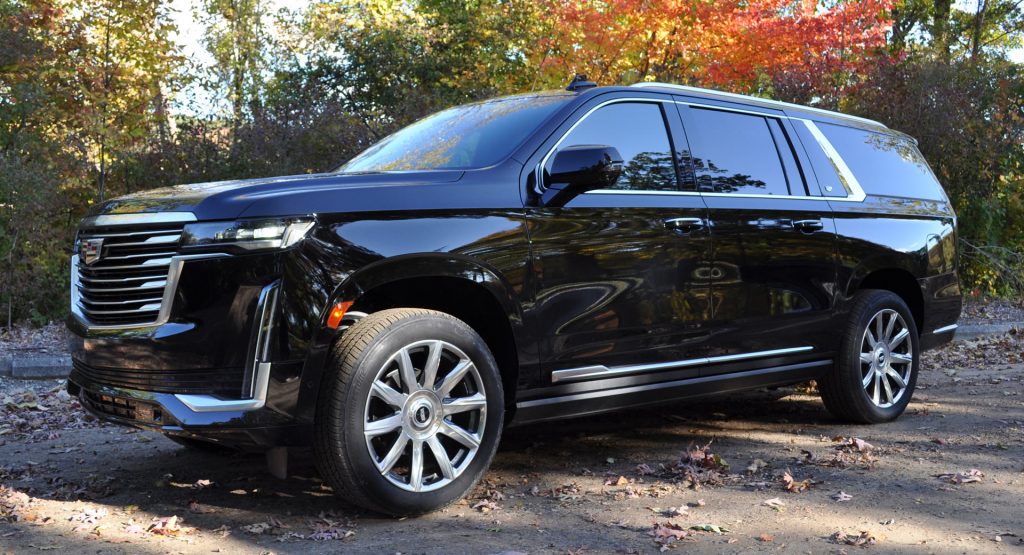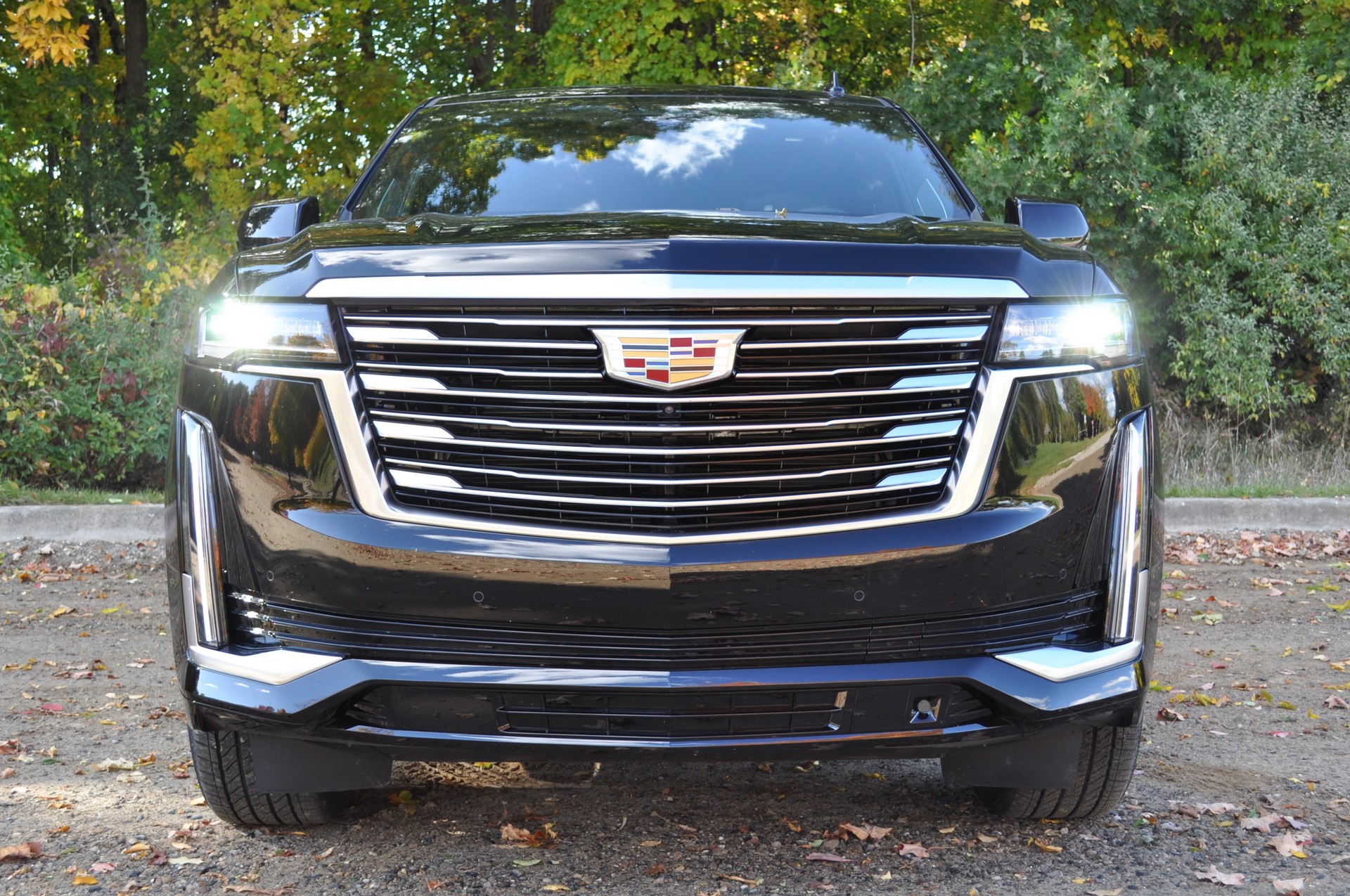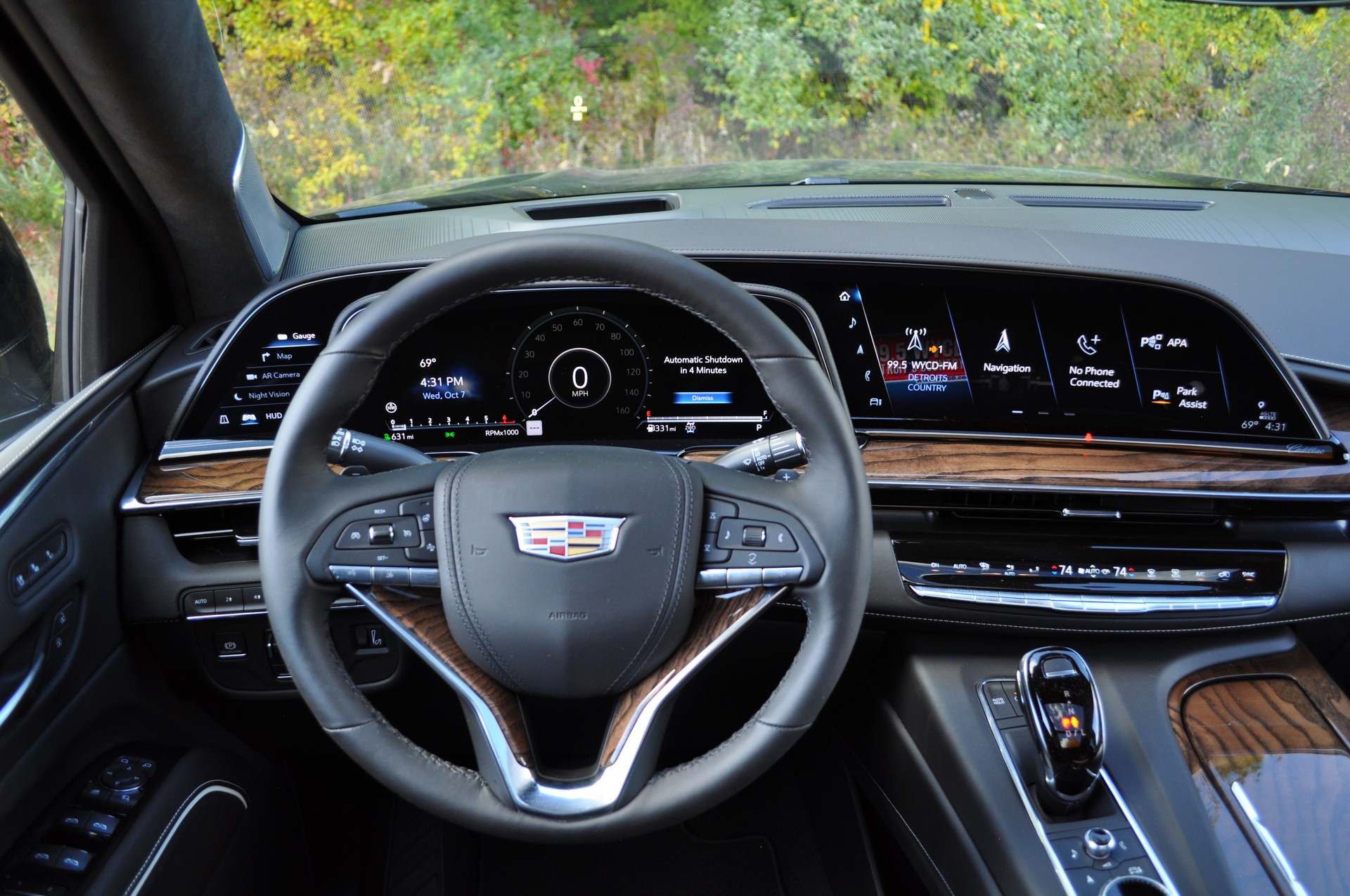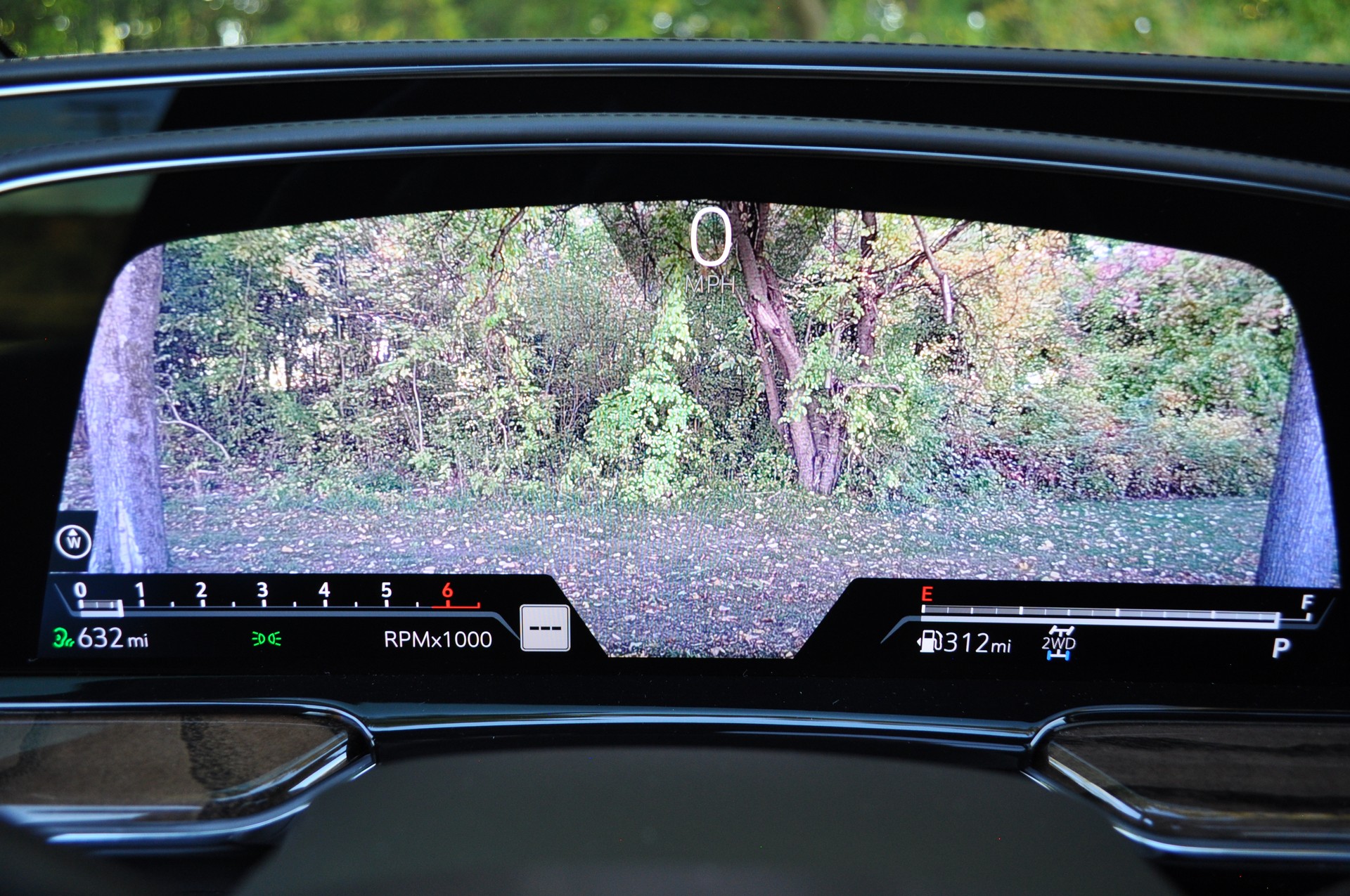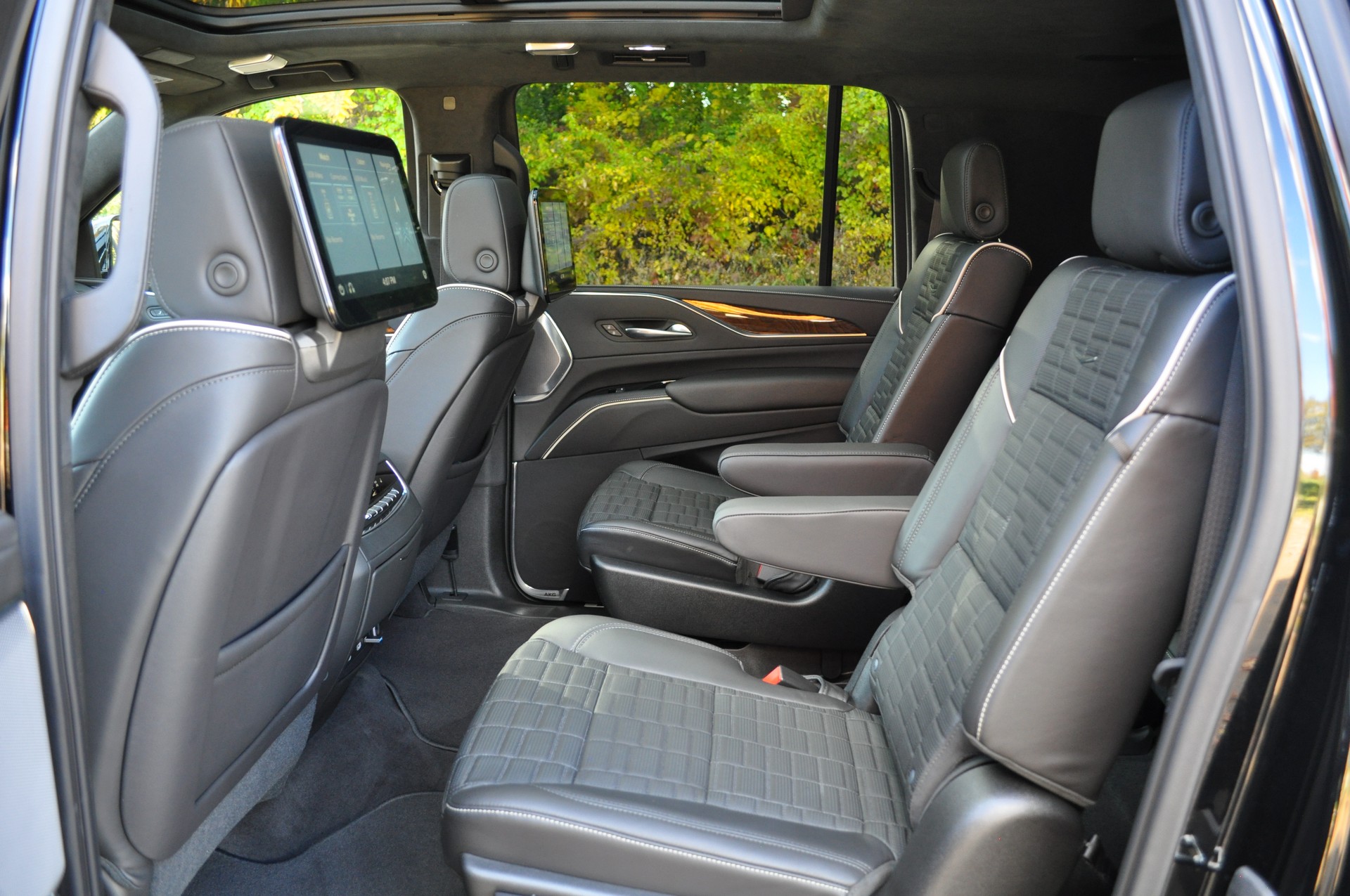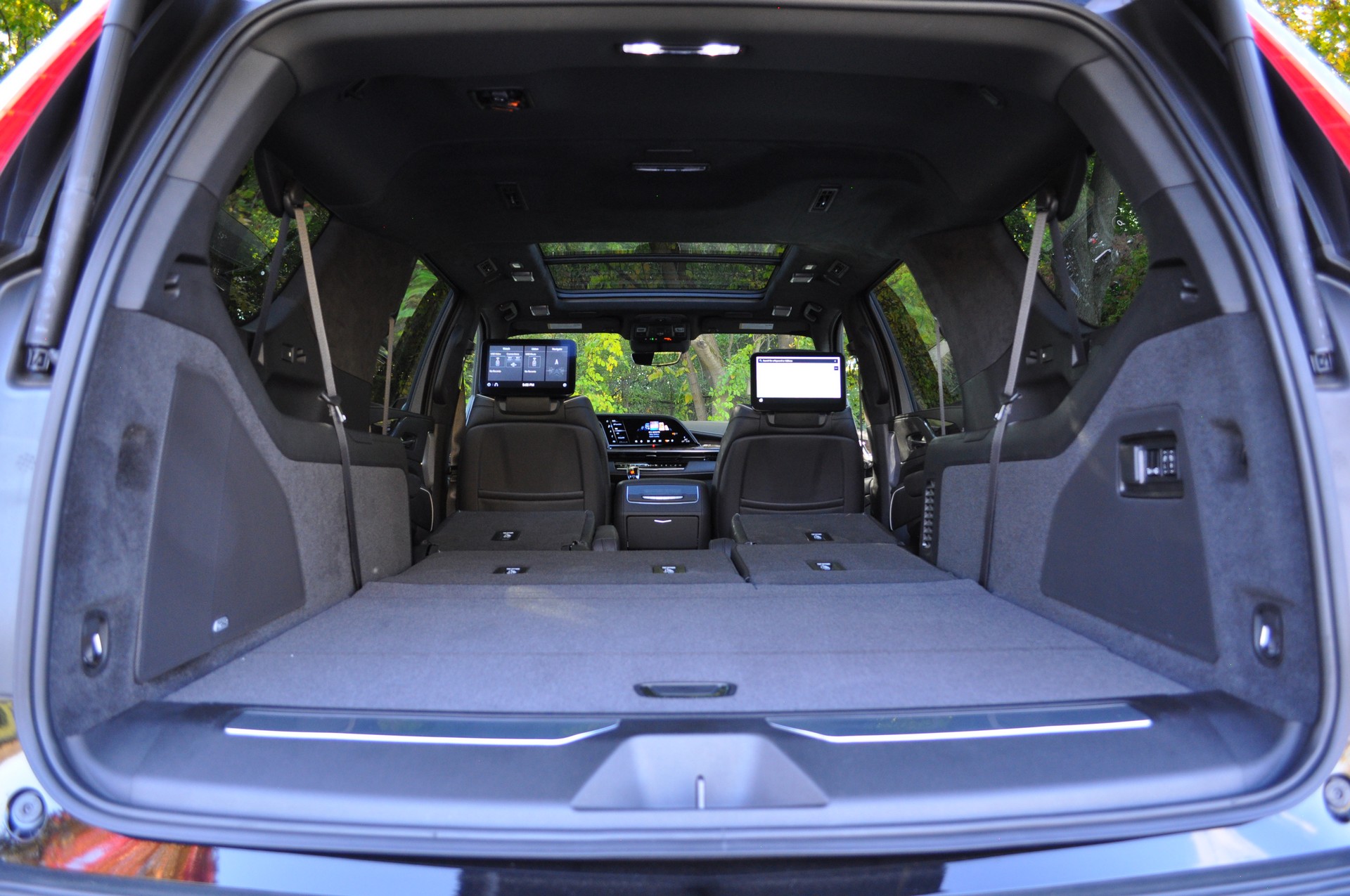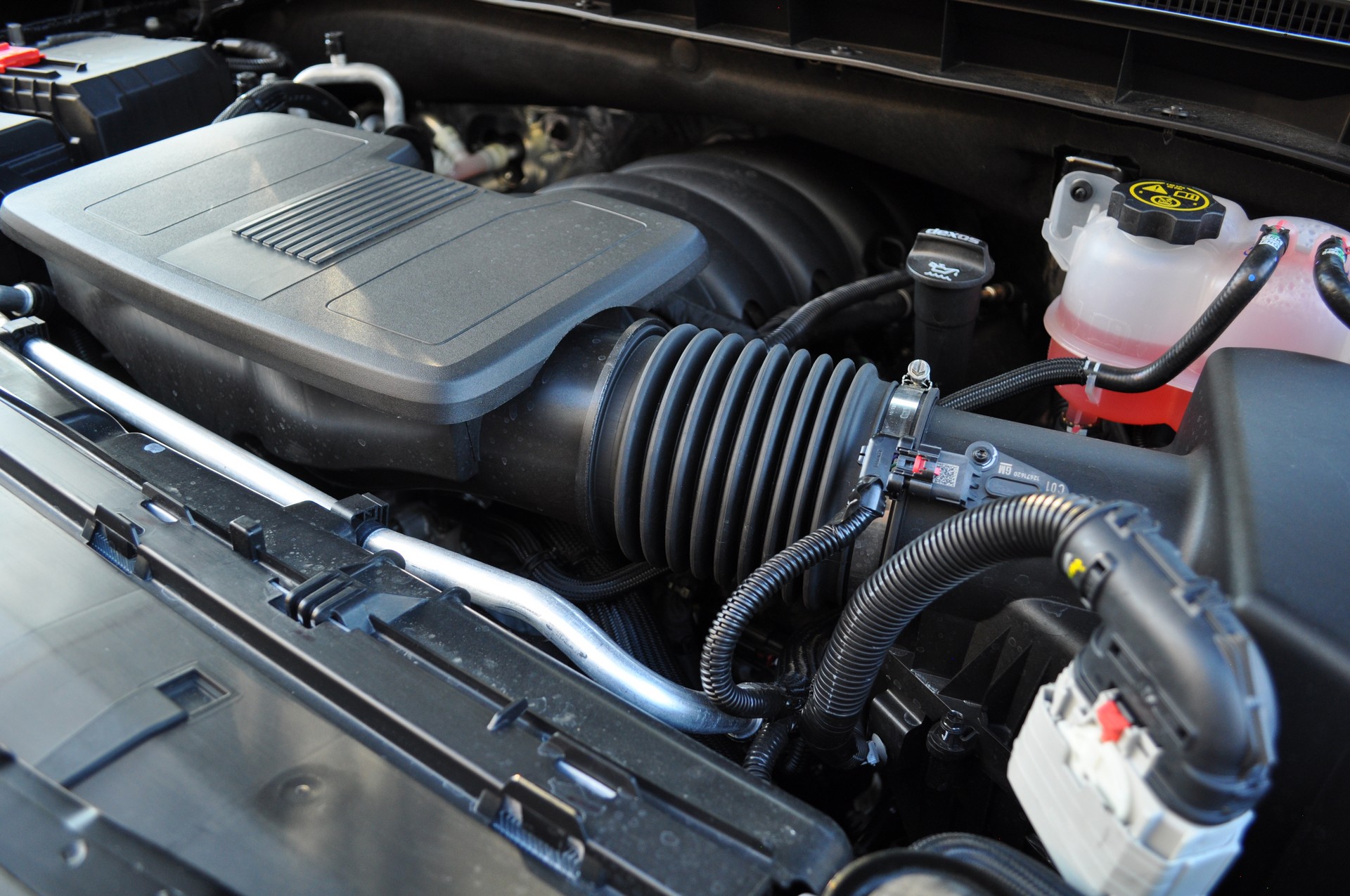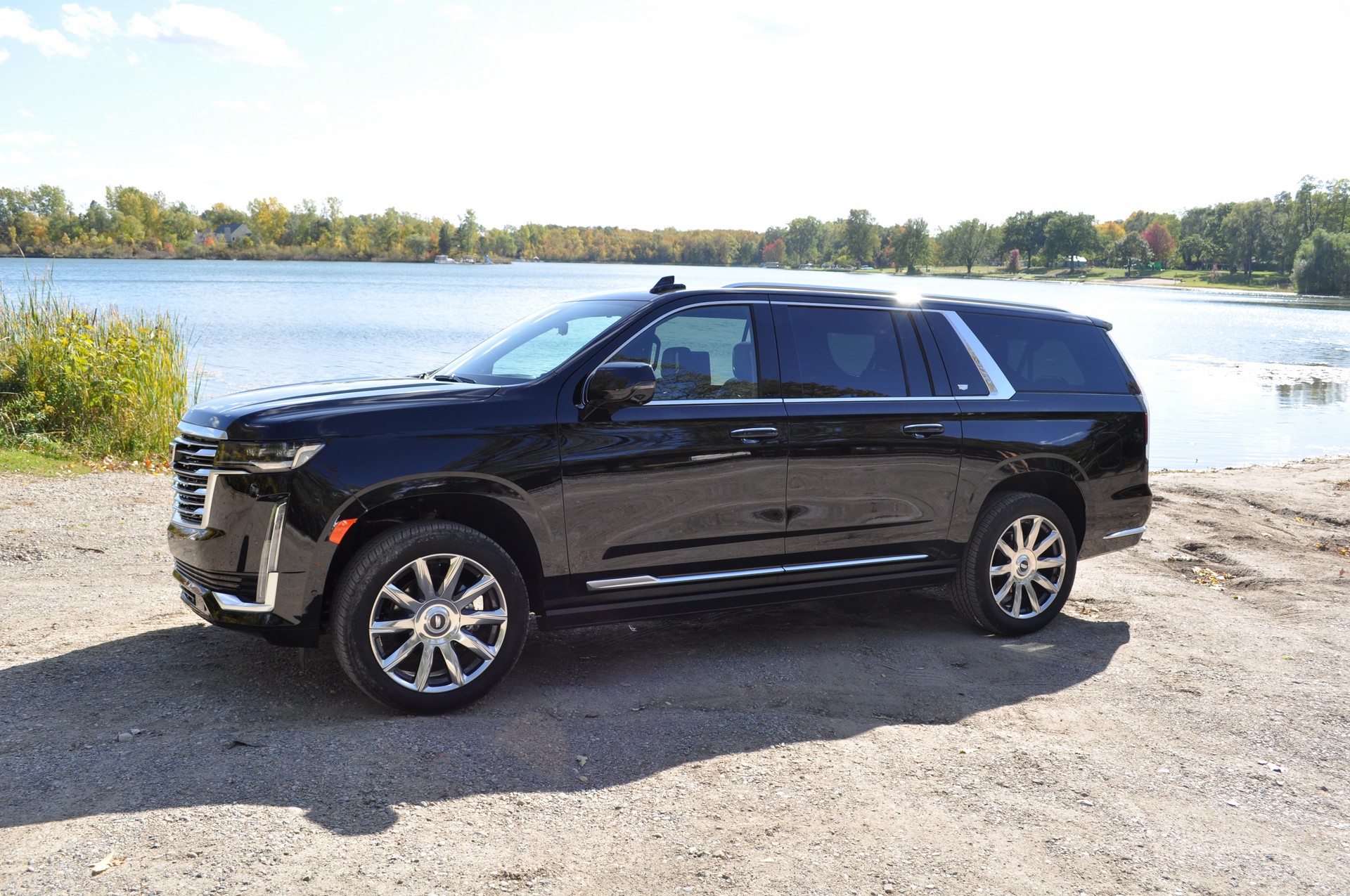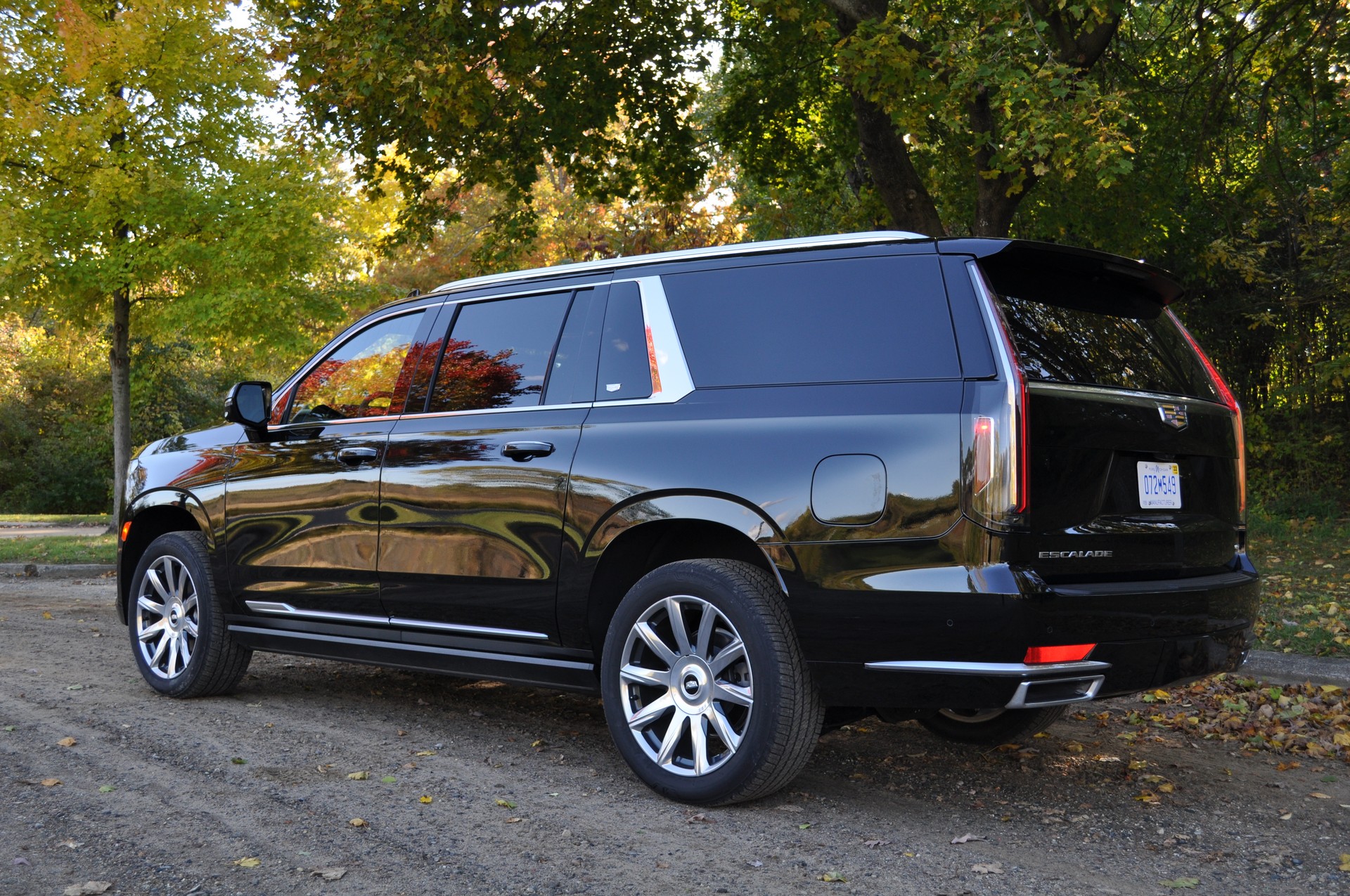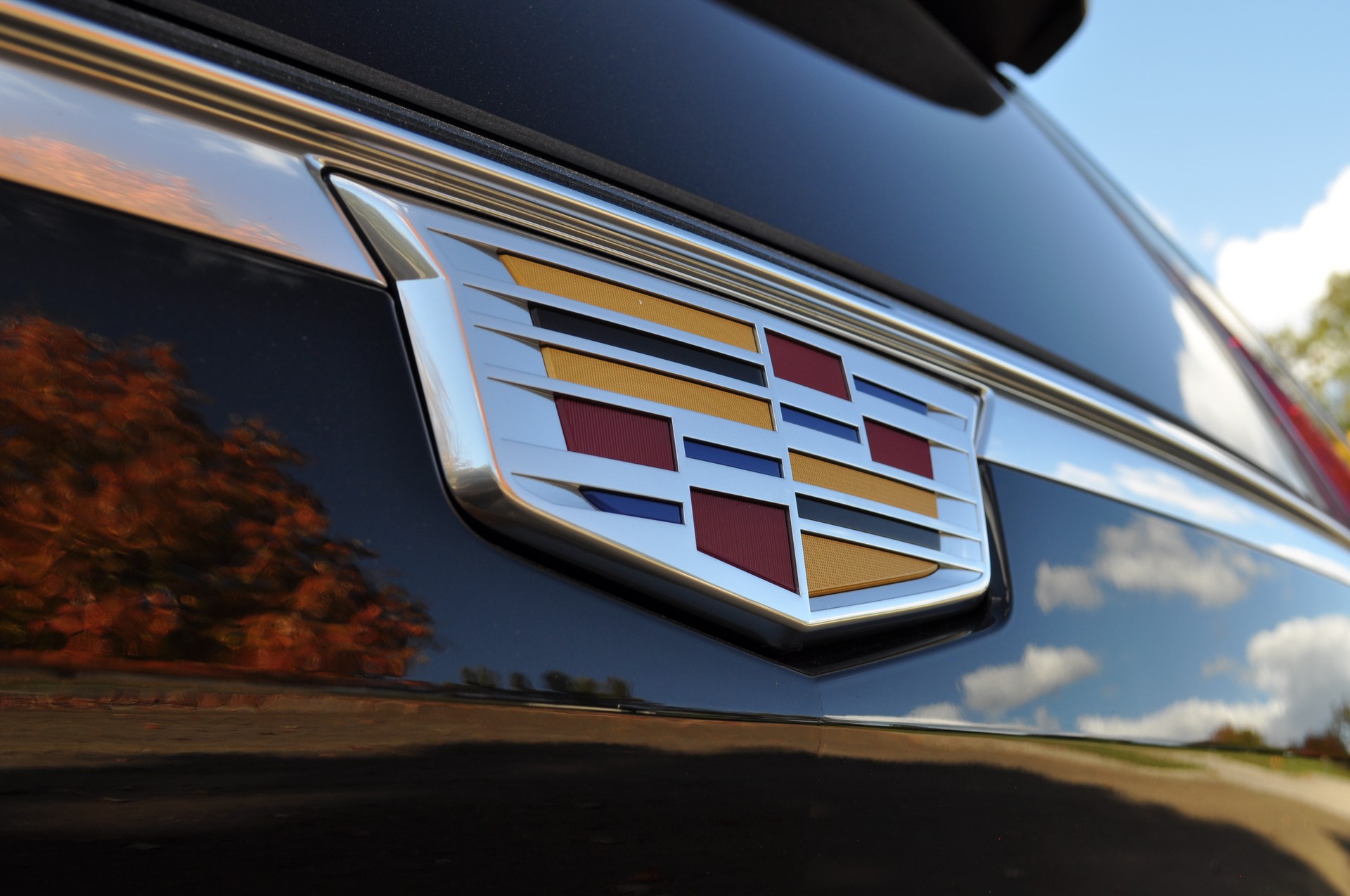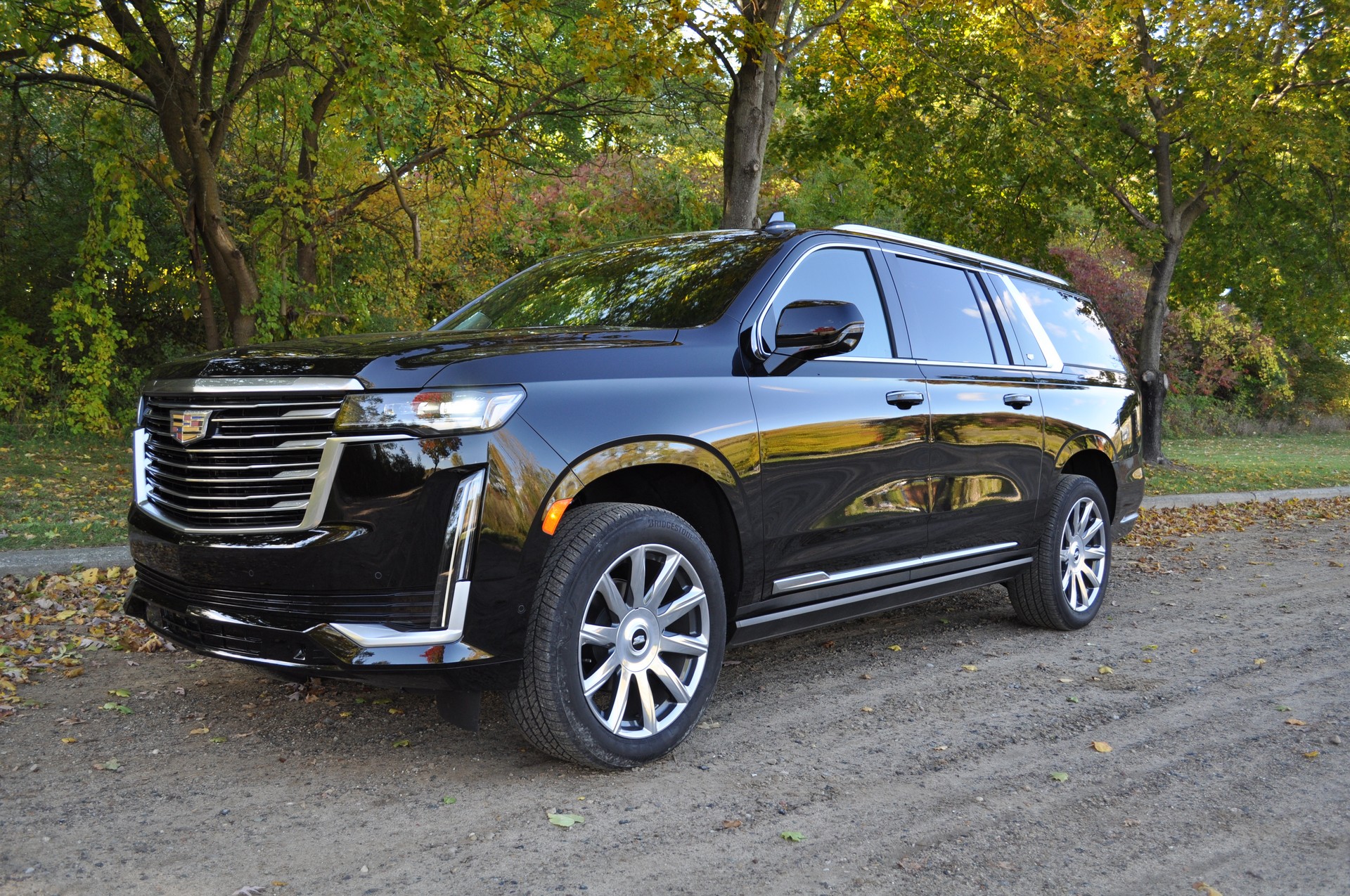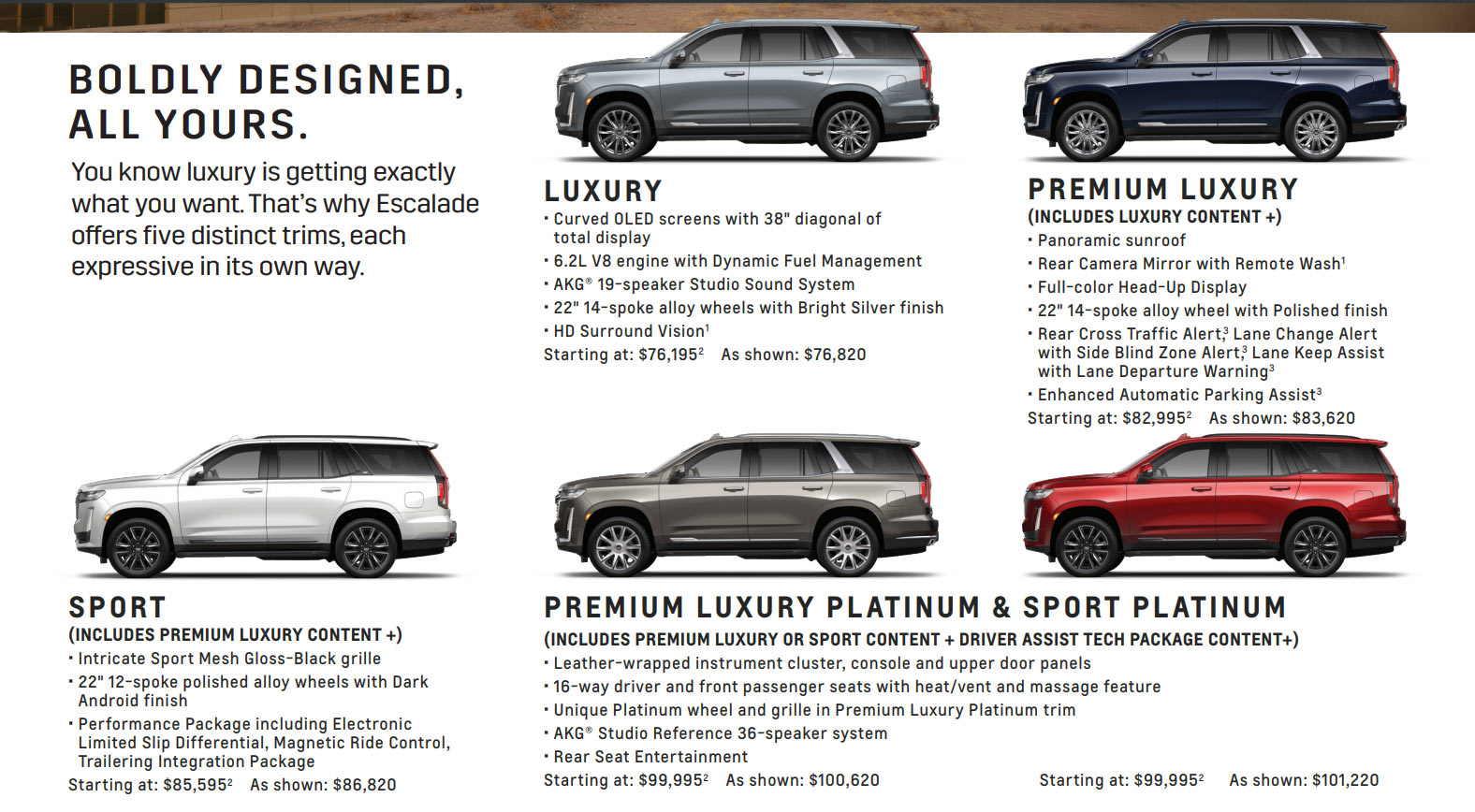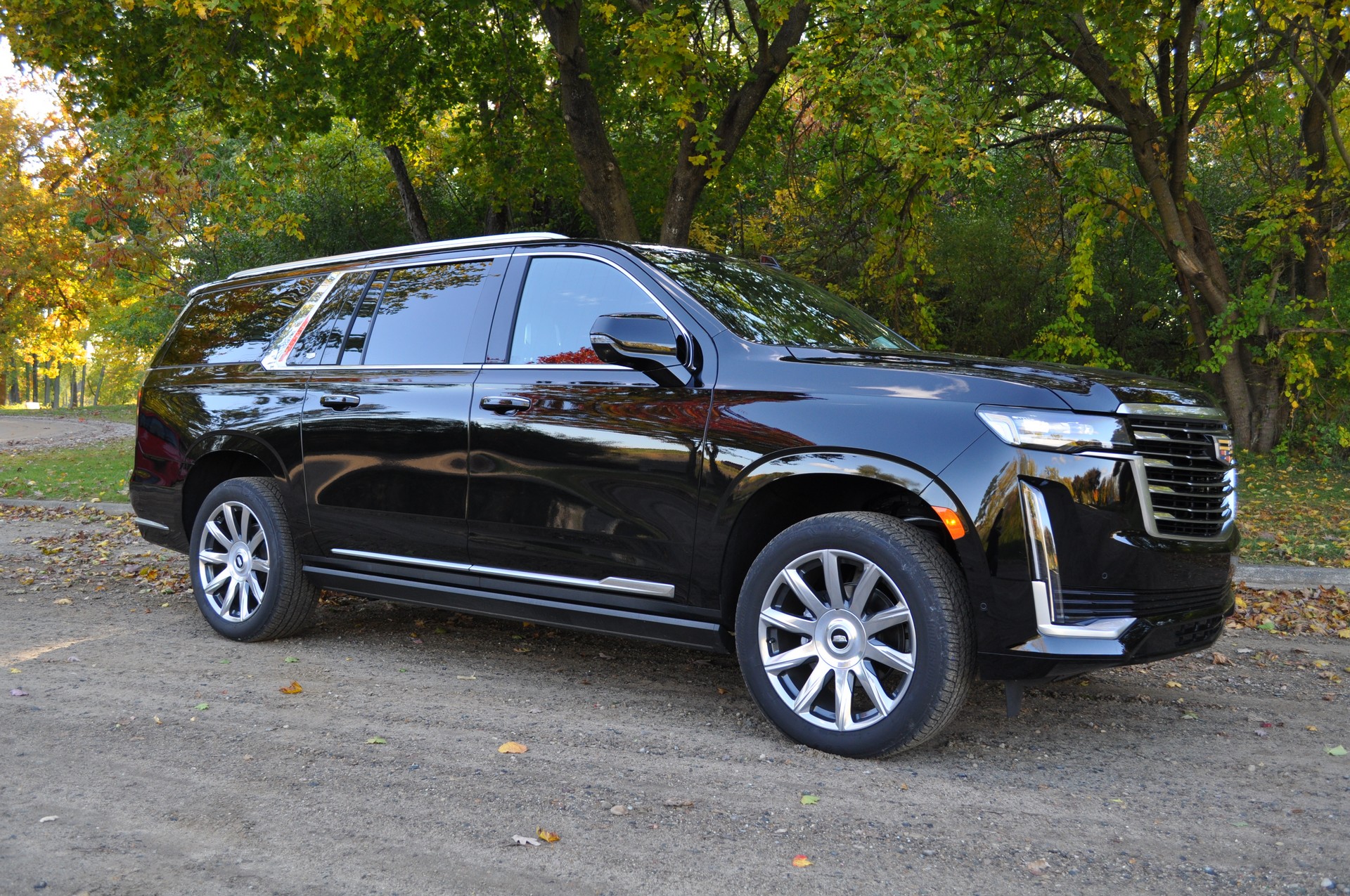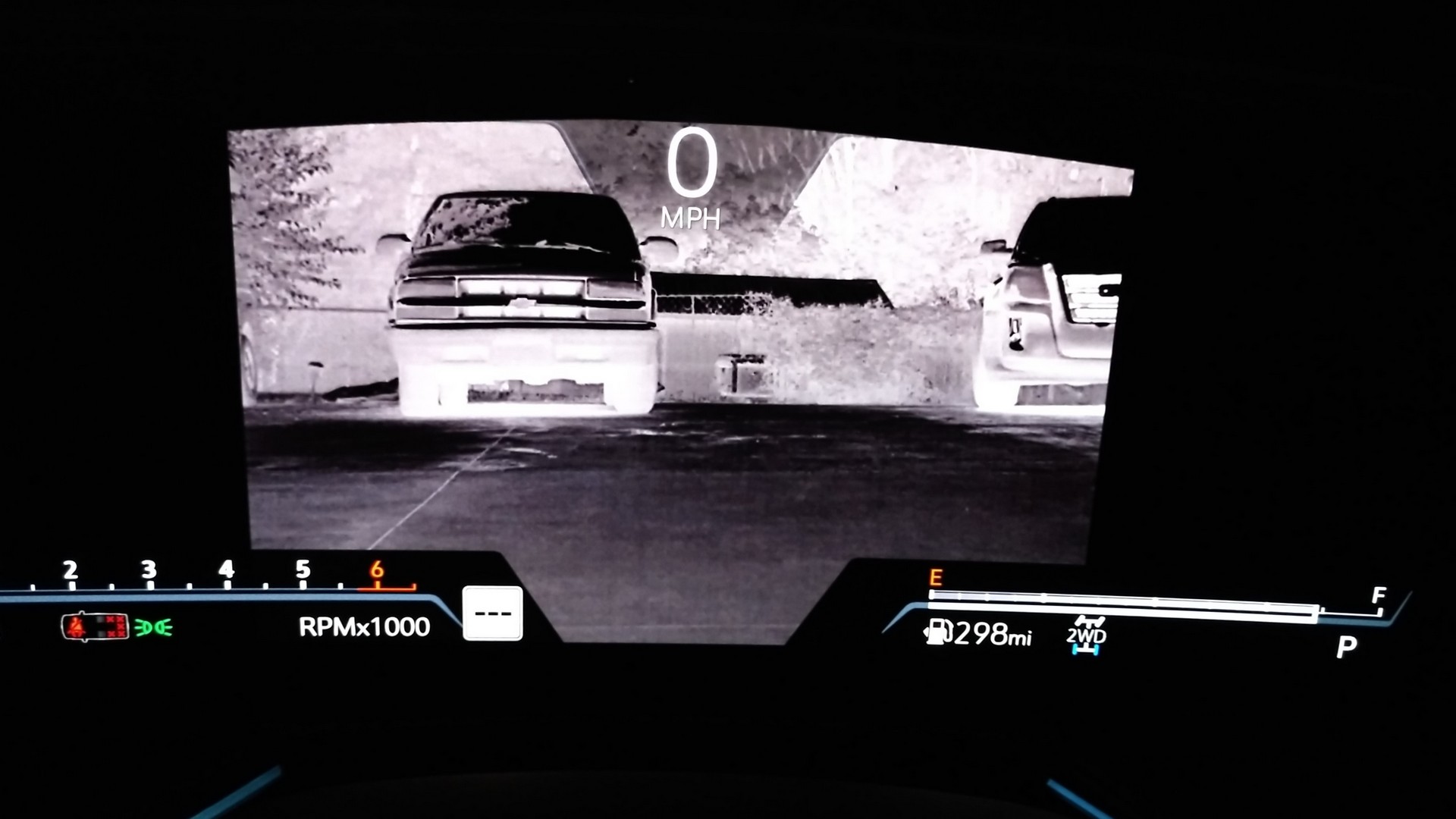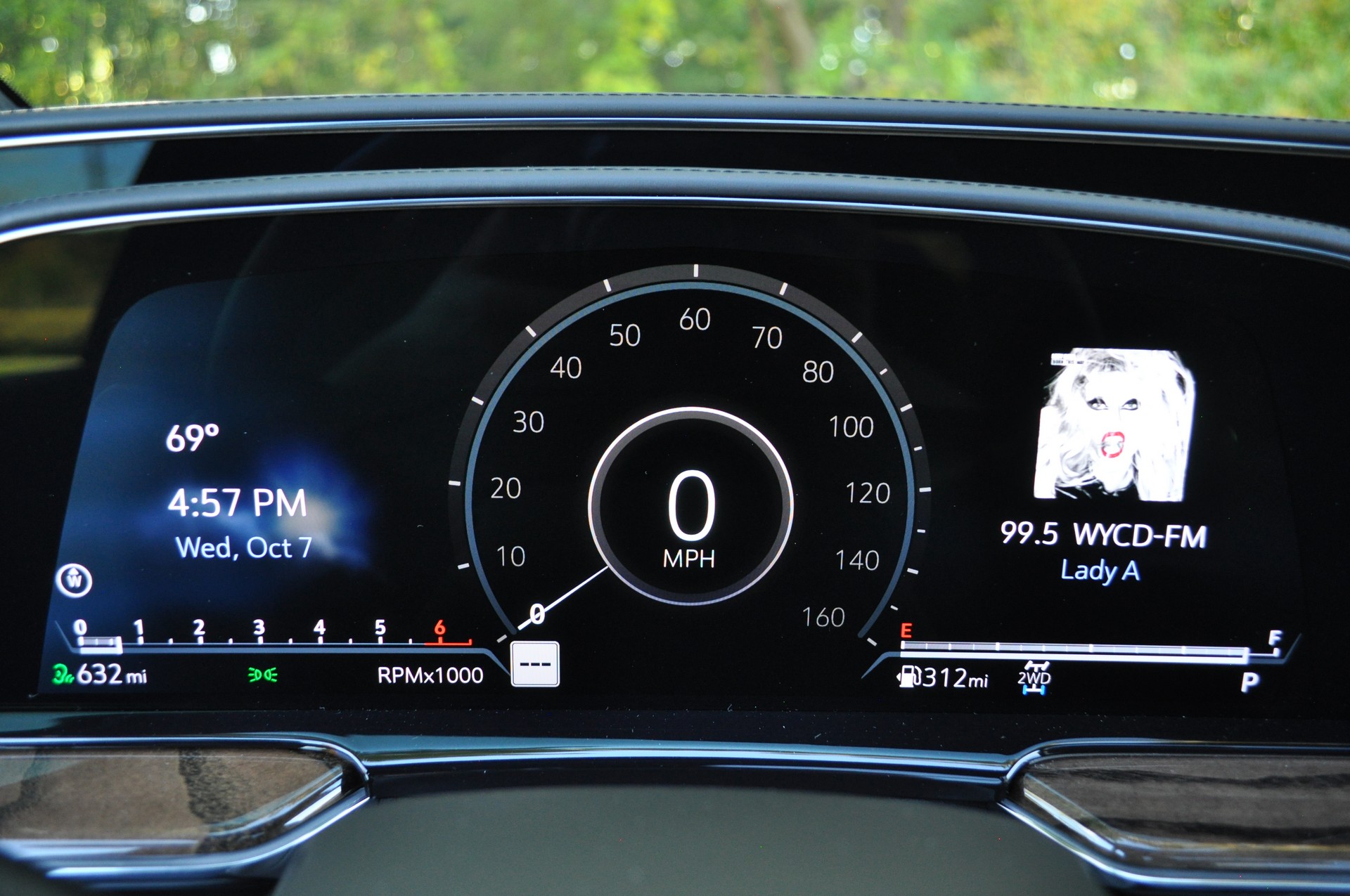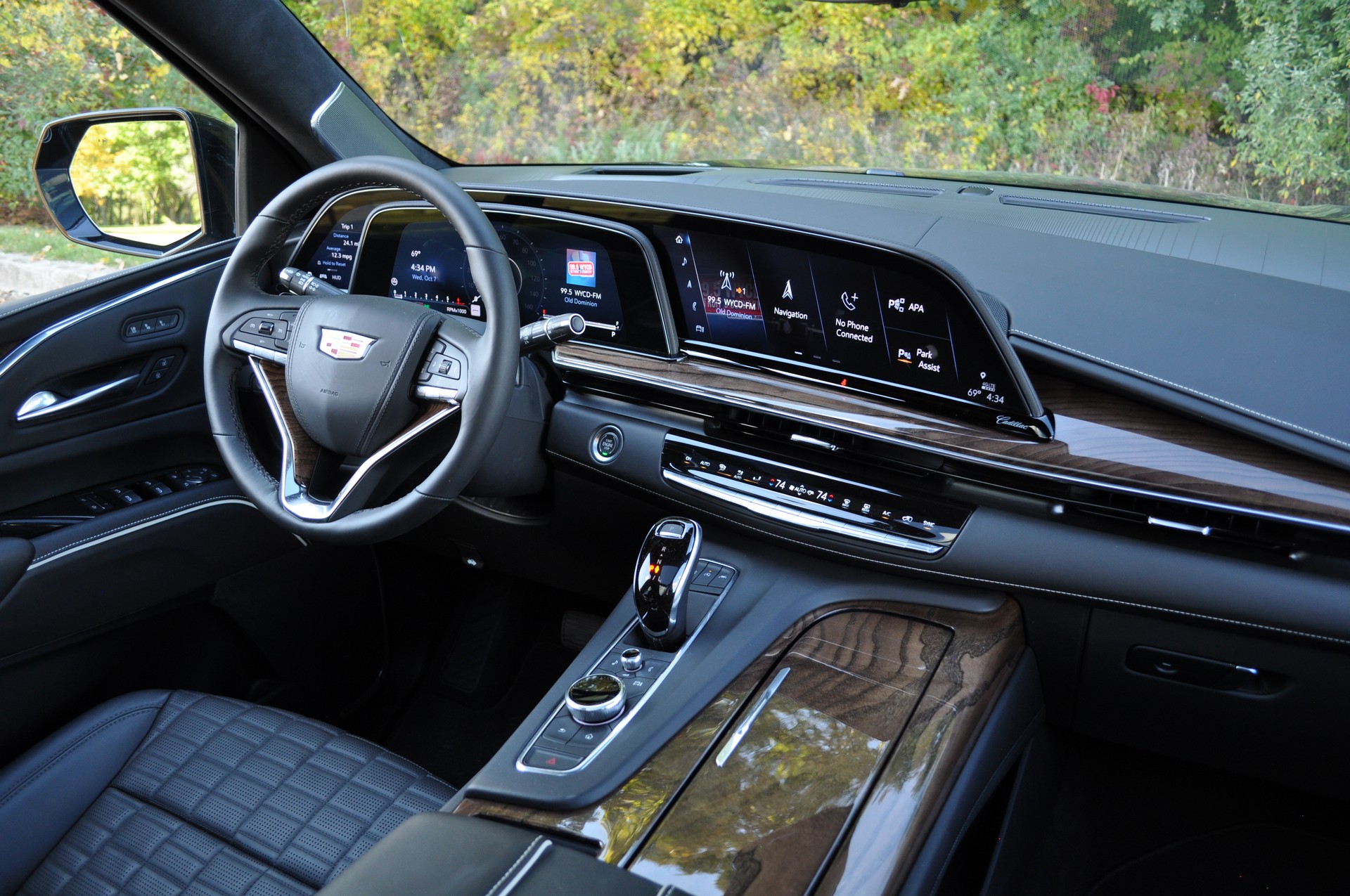If there’s one model that defines Cadillac, it’s the Escalade.
Everyone knows what it is and what it stands for. The name is so ingrained in popular culture that the Escalade has managed to survive not one, but two different naming conventions which saw traditional nameplates fall by the wayside.
While the original model was little more than a badge engineered GMC Yukon Denali, it was an instant hit as 23,897 units were sold in 1999. That wasn’t enough to top the Lincoln Navigator, but it firmly established the Escalade as GM’s luxury SUV.
Each successive generation has become more unique and that trend continues with the 2021 model. We recently spent some time with the Escalade ESV Premium Luxury Platinum and come away pretty impressed as it finally feels like a proper flagship.
A More Upscale, Escala-Inspired Design
While Escalades are often associated with bling, designers have toned things down and incorporated a number of cues from the well-received Escala concept.
This is clearly visible up front as the Escalade adopts a more conservative grille which is flanked by horizontal IntelliBeam LED headlights. The lower treatment is nearly identical to the one used on the Escala as there are vertical LED daytime running lights, a wide intake and flowing Galvano accents.
Viewed from the side, the Escalade closely echoes the Chevrolet Tahoe and GMC Yukon. However, the Cadillac has ‘hidden’ C-pillars with black accents that visually expand the greenhouse. The model also has wreathless crest logos and standard 22-inch alloy wheels.
While the front is heavily inspired by the Escala, the rear end is evolutionary as it features vertical LED taillights and a massive Cadillac crest. The latter doubles as a button for opening the power liftgate, and it can be used as an alternative to kicking your foot underneath the bumper.
Since Escalade owners like to express themselves, there are eight exterior colors and a Radiant Package which adds a bright mesh grille, monochromatic emblems, chrome wheels and puddle lights that project the Cadillac crest onto the ground. Customers can also opt for one of two Sport trims which feature a black mesh grille, gloss black accents and dark wheels.
A Game Changing Interior
While Cadillac is a luxury brand, their interiors often aren’t up to snuff. That’s been a complaint for decades, but the brand is finally doing something about it.
Once seated behind the leather-wrapped steering wheel, you’d be hard pressed to tell the Escalade is related to the Tahoe and Yukon. Nearly everything in the front row is unique to the Escalade and the most notable feature is the curved OLED display.
It consists of three separate screens including a 7.2-inch driver information center, a 14.2-inch digital instrument cluster and a 16.9-inch infotainment system. They’re gorgeous and feature twice the pixel density of a 4K television.
We’ll have more to say about them in a separate article, but the screens are great and the digital instrument cluster features up to four different displays. Besides a fairly typical gauge display, the cluster can show augmented reality, map and night vision views.
The augmented reality display is notable as it shows a live video feed of what’s in front of the Escalade. However, the real coup de grâce is that navigation information is overlayed on top of the video feed and this shows you where to turn.
Besides the high-tech screens, the Escalade has a unique dashboard with a wide swatch of wood trim. Other highlights include stylish climate controls, an elegant ambient lighting system and a unique center console which can be outfitted with a refrigerator / freezer.
While the standard Escalade comes nicely equipped, the Premium Luxury Platinum is truly luxurious as it features semi-aniline leather seats with 16-way power adjustment up front as well as heating, ventilation and massage functions. Buyers will also find an automatic heated steering wheel, a panoramic sunroof and a vertical smartphone charger which keeps your device within easy reach.
Other notable highlights include a suede-like headliner, a tri-zone automatic climate control system and soft-close doors. There’s also a power tilt / telescoping steering column, heated second row seats and a 36-speaker AKG premium audio system. As an added bonus, the model sports illuminated sill plates, a leather-wrapped dashboard and a rear-seat entertainment system with two 12.6-inch displays.
While the Escalade’s front row is pretty impressive, the specialness dissipates the further you go back. That being said, the second row has unique climate controls, elegant door panels and metallic accents on the sliding and power-folding captain chairs.
Speaking of the seats, they’re pretty comfortable and offer 41.7 inches (1,059 mm) of legroom. That’s an increase of up to 2.7 inches (69 mm) and it means second row passengers have plenty of room to relax.
The extra space is welcome, but it’s nothing compared to the third row which can now accommodate adults in comfort. The standard Escalade boasts 34.9 inches (886 mm) of legroom in back and that’s 10.1 inches (257 mm) more than last year’s model. The Escalade ESV is even more accommodating as its third row has 36.6 inches (933 mm) of legroom. On top of that, both have a more natural seating position and plenty of headroom.
When it comes to cargo hauling, the Escalade is up for the task as there’s 25.5 cubic feet (722 liters) of space behind the third row. At the touch of a button, the third row seats fold down to create 63 cubic feet (1,784 liters) of cargo room. If that isn’t enough, the second row can be folded to provide an impressive cargo capacity of 109.1 cubic feet (3,089 liters).
Since is the ESV is 15.9 inches (404 mm) longer than the standard model, it’s the cargo hauling champion. It offers 42.9 cubic feet (1,214 liters) behind the third row and 81.5 cubic feet (2,308 liters) behind the second row. With both rows folded, there’s a whopping 126.6 cubic feet (3,585 liters) of space.
These are notable gains from last year and they’re due to a variety of factors including a new independent rear suspension and larger exterior dimensions. The standard Escalade grows 7.1 inches (180 mm) and has a 4.9 inch (124 mm) longer wheelbase. Likewise, the Escalade ESV is 2.6 inches (66 mm) longer than before and has a wheelbase that spans an additional 4.1 inches (104 mm).
A Familiar V8 Will Be Joined By A New Diesel Engine
Power is provided by a familiar 6.2-liter V8 engine that produces 420 hp (313 kW / 426 PS) and 460 lb-ft (624 Nm) of torque. It’s paired to a ten-speed automatic transmission which can be backed up by an optional four-wheel drive system.
Like in the Chevrolet Tahoe High Country, the powertrain is a good fit for the massive SUV. The engine has plenty of power and moves the 5,992 lbs (2,718 kg) ESV with relative ease. While it’s no sports car, the model can hustle when pushed and never feels underpowered.
That being said, the Lincoln Navigator’s twin-turbo 3.5-liter V6 develops 450 hp (336 kW / 456 PS) and 510 lb-ft (691 Nm) of torque. The Navigator is also more fuel-efficient despite being heavier. Of course, if you can afford a full-size luxury SUV, you’re probably not going to fret over of fuel economy ratings as low as 14 mpg city, 19 mpg highway and 16 mpg combined.
If that is a concern, a 3.0-liter Duramax turbodiesel inline-six will be added to the lineup later this year as a no-cost option. The engine is expected to have 277 hp (207 kW / 281 PS) and 460 lb-ft (624 Nm) of torque, and Cadillac says it produces “strong torque across the power band for confident performance and trailering capability.”
On the topic of towing, the Escalade can haul up to 8,200 lbs (3,719 kg) when properly equipped. The model also offers a heavy-duty trailering package which includes an upgraded cooling system, an auxiliary trailer camera, trailering assist guidelines and an automatic two-speed transfer case on four-wheel drive variants.
Drives Smaller Than It Is
While the Escalade doesn’t look like a Tahoe or Yukon from behind the wheel, it certainly drives like one. That’s to be expected as all three use the same platform and feature an all-new independent rear suspension which helps to improve ride quality.
The model can be further enhanced with magnetic ride control which uses sensors to continuously monitor road conditions and change damping rates to respond to the situation at hand. The change happens almost instantly and it helps to “reduce vertical body motion, body roll and vibrations that can often resonate in a large SUV.”
The Escalade can also be equipped with an optional air ride adaptive suspension that features automatic load-leveling as well as continuous ride height adjustment. The system automatically reduces the ride height at highway speeds and can be programmed to lower 2 inches (51 mm), when parked, to improve entry and egress.
The ride height can also be raised for driving in rough terrain. While you probably won’t see an Escalade tackling the Rubicon Trail, the extra 2 inches (51 mm) could prove useful when traveling to a backwoods cabin.
Speaking of off-roading, the Escalade comes standard with a mechanical limited-slip rear differential. Higher-end variants feature a more advanced electronic limited-slip diff which is more responsive and promises to improve traction as well as cornering.
Thanks to the independent rear suspension, air ride technology and adaptive dampers, our tester felt pretty responsive. Body roll was minimal and that’s pretty impressive when you consider the size and weight of the Escalade ESV.
You also never get the feeling that you’re driving the automotive equivalent of an aircraft carrier. Part of this can be chalked up to the Escalade’s turning radius of 39.7 feet (12.1 meters) for the standard model. That’s not exactly tight, but it beats the Lincoln Navigator.
While the model is fairly maneuverable, you have to be conscious about its size. Small parking lots can be a little tricky, but the Escalade comes standard with front / rear park assist, front / rear pedestrian detection and a multitude of cameras. Higher end variants add reverse automatic braking, a rear camera mirror and adaptive park assist.
On the open road, the Escalade delivers a comfortable ride as most impacts are well absorbed and barely noticeable. However, things aren’t perfect as you’ll feel and hear larger imperfections.
Given its position as a luxury vehicle, the Escalade benefits from additional noise, vibration and harshness improvements over its platform mates. Cadillac officials were coy on specifics, but mentioned additional sound deadening material and laminated side glass for the front row. Thanks to these efforts, the SUV is relatively hushed although there is a bit more road noise than we’d like at highway speeds.
If the noise is too bothersome, you can simply crank up the standard 19-speaker AKG audio system which features a subwoofer and a 14-channel amplifier. Platinum variants have an even more impressive AKG Studio Reference system with 36 speakers and three amplifiers. The range-topping system sounds good and features separate volume controls for the front passenger as well as a conversation enhancement function. It uses microphones and speakers to aid communications between front and rear passengers.
The Escalade feels at home on the highway and model’s adaptive cruise control system makes long trips a breeze. Unfortunately, it’s not offered on the base model and requires two packages on the Premium Luxury trim. The packages add an assortment of amenities but cost $6,350. At that point, you might as well opt for Super Cruise which is an extra $2,500.
This pushes the price of the Escalade Premium Luxury close to $100,000 but Super Cruise allows for hands-free driving on more than 200,000 miles (321,869 km) of compatible highways in the United States and Canada. It uses LiDAR map data, GPS coordinates as well as a series of cameras and sensors to enable the Escalade to drive itself.
While our tester wasn’t equipped with Super Cruise, the system has been updated with several new features including an automated lane change function which enables drivers to simply tap the turn stalk to tell the vehicle to change lanes. Once an appropriate opening has been found, the Escalade will automatically change lanes.
Super Cruise is new to the Escalade, but it’s been offered on the CT6 for years and 85% of owners said they would “prefer” or “only consider” another vehicle equipped with the system. Given that response, it’s no surprise Super Cruise is available on the Escalade and will soon be offered on an assortment of other models.
Pricing Starts At $76,195
Despite the significant improvements, the 2021 Escalade only costs $1,000 more than its predecessor. Pricing starts at $76,195 and nets you a Luxury variant with a heated steering wheel, OLED displays and leatherette seats with heating for the first two rows.
The Premium Luxury trim starts at $82,995 and features heated / ventilated leather front seats, a panoramic sunroof, a head-up display and a rear camera mirror. The model also boasts more driver assistance systems, improved security features as well as the ability to purchase options such as Super Cruise.
Sitting one step above is the Escalade Sport which begins at $85,595. Besides the aforementioned black out appearance, the model builds on the Premium Luxury by adding an electronic limited-slip differential, magnetic ride control and a trailering integration package.
Lastly, there’s the Premium Luxury Platinum and Sport Platinum. Both start at $99,995 and feature most of the equipment we mentioned earlier.
Adding four-wheel drive increases the sticker price by $3,000 while the ESV variant is an extra $6,000. Given this, it’s no surprise our Escalade ESV Premium Luxury Platinum cost $111,045 before the $1,295 destination charge. That’s a lot, but the model was equipped with an assortment of options including a night vision system, power retractable side steps and the heavy-duty trailering package.
So Is The Escalade More Than Just A Fancy GMC Yukon Denali?
Yes and no, but that’s oversimplifying things. The 2021 Escalade is far more distinctive than its predecessors and it actually feels kind of special this time around.
Thanks to Cadillac’s decision to embrace cutting-edge technology and a truly upscale interior, the Escalade feels like a proper luxury SUV. However, it might not be as refined as some would expect for something that can easily cost more than $100,000.
It’s also worth mentioning the Escalade’s competitors haven’t been resting on their laurels. The redesigned Lincoln Navigator has been largely praised and the model also has to fend off the similarly priced BMW X7 and Mercedes GLS.
The Germans offer a more extensive engine lineup and impressive levels of equipment. In particular, the GLS offers an executive rear seat package which includes heated / ventilated second row seats with power adjustment and a massage function. That’s on top of a second row wireless smartphone charger and a 7-inch tablet.
Of course, at the end of the day, there’s only one Cadillac Escalade. It’s significantly improved and fans will undoubtedly be happy with the changes.




